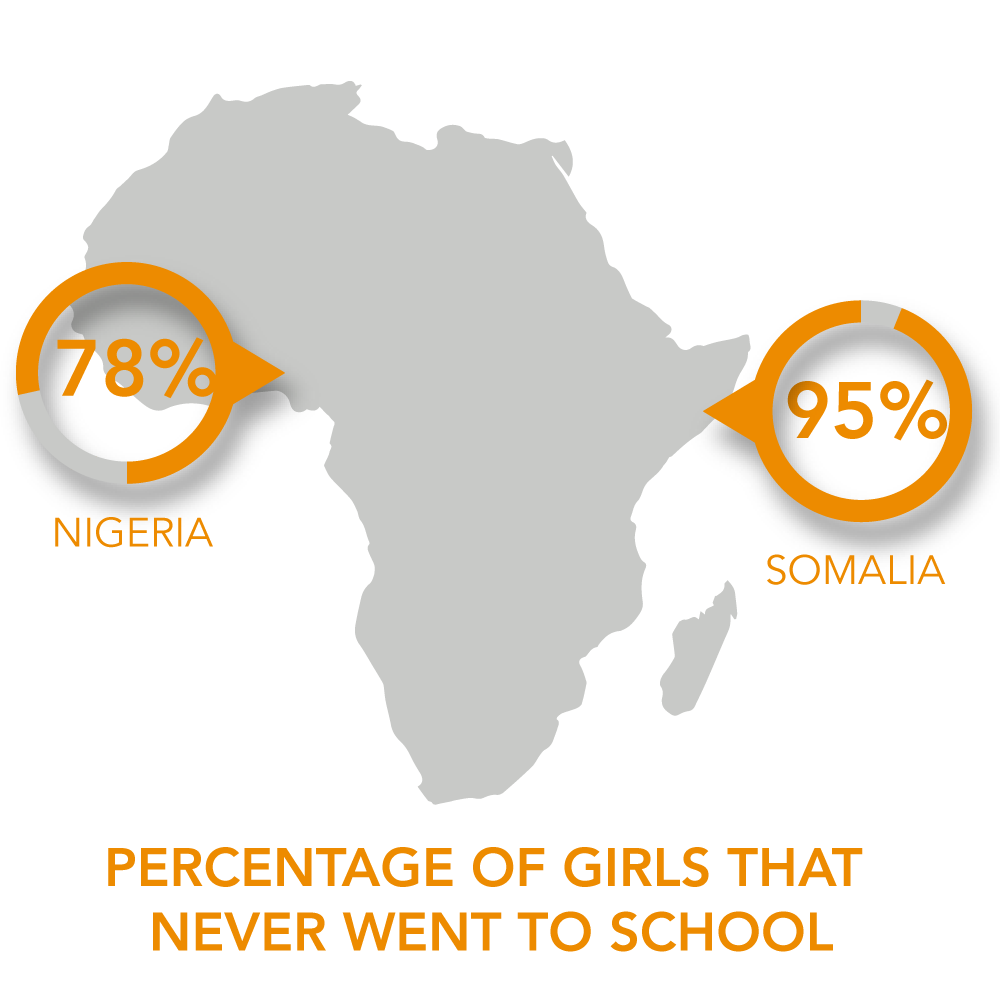
According to UIS (UNESCO Institute of Statistics) data, 15 million girls roughly between the ages of 6 and 10 will never set foot in a classroom compared to about 10 million boys if current trends continue.
According to UIS data, in low-income countries, more than 11 million girls of primary age are out of school, compared to almost 9 million boys.
The United Nations Girls’ Education Initiative (UNGEI) reported that more than 700,000 girls in Uganda between the ages of six to 12 have never attended school.
Around the world, 129 million girls are out of school, including 32 million of primary school age, 30 million of lower-secondary school age, and 67 million of upper-secondary school age.
Source: https://www.unicef.org/education/girls-education

According to UNICEF, education for girls is a lifeline to development. It is the most critical area of empowerment. Offering education is a way of giving power to everyone. Educated women are more capable to bring about a positive change in society and for the betterment of the nation.
Investing in girls’ education transforms communities, countries and the entire world. Girls who receive an education are less likely to marry young and more likely to lead healthy, productive lives. They earn higher incomes, participate in the decisions that most affect them, and build better futures for themselves and their families.
Girls’ education strengthens economies and reduces inequality. It contributes to more stable, resilient societies that give all individuals – including boys and men – the opportunity to fulfil their potential.
